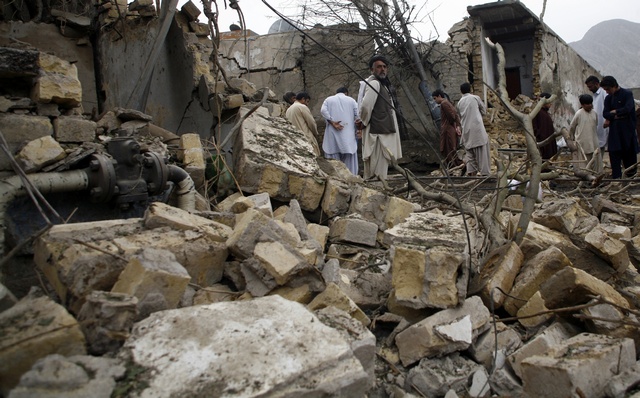Memo #323
By Dur-e-Aden – dur-e-aden [at] hotmail.com
 On December 16, 2014, Pakistani Taliban massacred over 132 children when they attacked a high school in Peshawar. They rationalized this attack as a reaction to the violence perpetrated against them (whether by the Pakistani military or US drones). This narrative attempts to shift blame for the violence away from the Taliban, creating an environment where the population becomes sympathetic to their rationales, even while disagreeing with their tactics. Therefore, it is increasingly important to challenge the Taliban narrative.
On December 16, 2014, Pakistani Taliban massacred over 132 children when they attacked a high school in Peshawar. They rationalized this attack as a reaction to the violence perpetrated against them (whether by the Pakistani military or US drones). This narrative attempts to shift blame for the violence away from the Taliban, creating an environment where the population becomes sympathetic to their rationales, even while disagreeing with their tactics. Therefore, it is increasingly important to challenge the Taliban narrative.
First, simply claiming to be fighting in reaction to military operations, does not make it true. Taliban in Pakistan were targeting civilians long before the start of any military campaigns. Lethal force was employed against them because the militants had started violence against the Pakistan state, rather than vice versa.
Second, while civilians are in fact being harmed by both the Pakistani military and the US drones, it is not clear if these victims are necessarily joining the Taliban. In fact, there is considerable evidence of child recruitment and forcible recruitment within the Taliban organizations.
Third, in the context of Afghanistan, in his study Jason Lyall found that while insurgents do increase their attacks after the use of force by the counter-insurgency, civilian casualties play an insignificant role in motivating these attacks. To put it simply, terrorist do not care about civilian casualties. By definition, terrorism is a tactic that deliberately targets civilians. Militants increase attacks because their own survival is threatened, and violence is a way of bolstering their bargaining leverage. The choice of targeting a school does show desperation on their part. To quote a Pakistani general, “The militants know they won’t be able to strike at the heart of the military, they don’t have the capacity. So they are going for soft targets.”
The use of lethal force against terrorist groups is a hard sell in today’s political climate, as experts often argue that it exacerbates the problem of terrorism. However, if the use of weapons is to be reduced in the “war against terrorism,” then it is important to challenge the terrorists’ narrative and condemn their actions in an unapologetic fashion. This will shrink the sympathetic space that makes it easier for these groups to operate, making their demise more likely.
About the Author:
Dur-e-Aden is a MA student in the Department of Political Science at the University of British Columbia.

Onlookers at the site of one of a series of Taliban attacks against civilians in the spring of 2013 on the eve of the country’s parliamentary elections. (Credit: Human Rights Watch).†
Links:
- Jason Lyall, “Airpower and Coercion in Counter-insurgency Wars: Evidence from Afghanistan” (2013)
- Asad Munir, “Narratives on the TTP,” The News (July 2013)
- Carlotta Gall, The Wrong Enemy: America in Afghanistan, 2001–2014 (New York: Houghton Mifflin Harcourt Publishing, 2014)
- Audrey K. Cronin. How Terrorism Ends: Understanding the Decline and Demise of Terrorist Campaigns(New Jersey: Princeton University Press, 2009)
- Ishaan Tharoor, “Why the Pakistani Taliban’s war on children keeps on going,” The Washington Post (December 2014)
Related Memos:
See our other memos on Pakistan.
Comments are closed, but trackbacks and pingbacks are open.